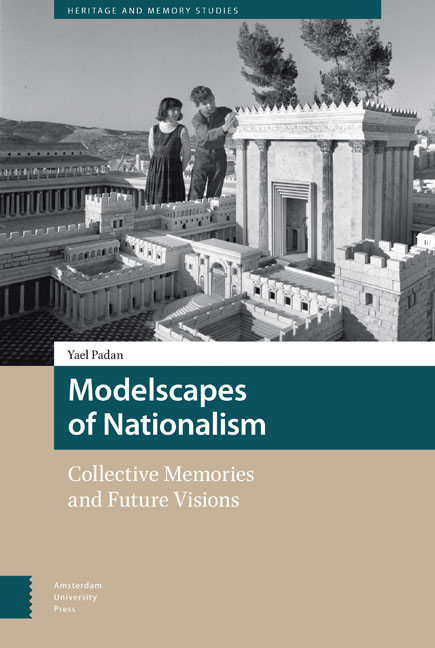Book contents
- Frontmatter
- Dedication
- Contents
- List of Illustrations
- Preface
- Introduction: Narratives into Objects, Objects into Narratives
- 1 The Qualities of Modelscapes
- 2 Models and Modern Perceptions of Nationalism
- 3 The Second Temple Model
- 4 Mini Israel
- 5 The Valley of the Communities
- Conclusions
- Bibliography
- Index
5 - The Valley of the Communities
Published online by Cambridge University Press: 12 February 2021
- Frontmatter
- Dedication
- Contents
- List of Illustrations
- Preface
- Introduction: Narratives into Objects, Objects into Narratives
- 1 The Qualities of Modelscapes
- 2 Models and Modern Perceptions of Nationalism
- 3 The Second Temple Model
- 4 Mini Israel
- 5 The Valley of the Communities
- Conclusions
- Bibliography
- Index
Summary
‘Our preoccupation with the vast geographic expansion and wide range of communities […] illustrates the overall story – a large Jewish Diaspora versus a small community forming in Israel’.
− Ministry of Defense WebsiteThe Valley of the Communities is a landscape project located at Yad Vashem, the Holocaust Martyrs’ and Heroes’ Remembrance Authority in Jerusalem. The Valley is a memorial to the Jewish communities which existed before the Holocaust and were mostly destroyed in the Second World War. It was planned by Lipa Yahalom – Dan Zur, landscape architects, and completed in 1992. It consists of a labyrinthine shape whose plan roughly resembles a map of Central and Eastern Europe, as well as North Africa (fig, 24). The Valley is dug into the ground and open to the sky, surrounded by walls of rock about 5-8 meters high, which bear the names of the Jewish communities. These names are carved more or less according to their geographical location, with different fonts indicating the size of each community.
Much has been written about the question of how historic events become part of collective memory, the process in which some events are chosen to be remembered while others are left to oblivion, as well as about the question of who determines the contents of collective memory, and how this memory changes over time. I concentrate here on the aspect of giving this memory a concrete shape, particularly using public sites and monuments.
The translation of memorial objects into narrative is not obvious. Young suggests that monuments are an artistic genre, and points out that both figurative and abstract works of art are often self-referential, exemplifying their own materiality and the process of their making. Such works typically refer to other works of art, creating an internal dialogue within the medium (Young, 11). Hence the questions arise: can this medium refer to an external historic event? And how is this reference achieved?
An examination of Yad Vashem and its different monuments raises another fundamental question about the possibility to represent memory at a location which is both physically and temporally distant from the sites where the actual events of the Holocaust occurred.
- Type
- Chapter
- Information
- Modelscapes of NationalismCollective Memories and Future Visions, pp. 161 - 206Publisher: Amsterdam University PressPrint publication year: 2017



